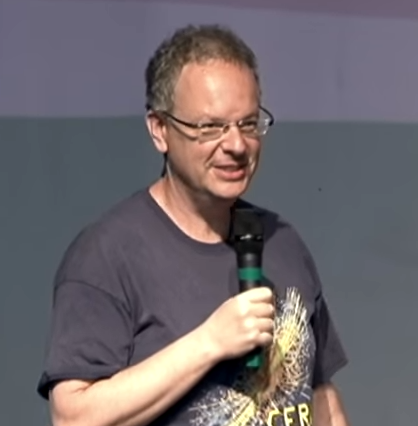Physics and philosophy
Rogério Rosenfeld took part in debates with Antonio Cicero on the 5th Art and Science edition, and discussed what we currently know and don’t know about the universe
Over the last few weeks, Rogério Rosenfeld, current director of IFT/Unesp and vice-director of ICTP-SAIFR, took part in a series of debates to talk about science and his area – from the microscopic world of Particle Physics to the macroscopic one of galaxies and the universe. The events were part of the 5th Art and Science edition, which brings together professionals from different areas for a series of lectures and discussions in cities throughout Brazil.
Click here to watch one of Rogério Rosenfeld’s talks on the 5th Art and Science edition.
“I enjoyed being part of this initiative because I had the opportunity to talk about science and about my area for the general public, and I think science communication is essential”, says Rogério.
Of the four debates Rogério participated in, three were with the philosopher Antonio Cicero. The theme of these events was the universe: how is the dialogue today between physics and philosophy when it comes to its origin and its mysteries, as dark matter and dark energy?
What we know that we know
In his lectures, Rogério first talked about “what we know that we know” about the universe. At the microscopic extreme, we learned over the centuries that matter is consisted of atoms, that they are divisible into electrons and the nucleus, and that the nucleus is made of neutrons and protons. With scientific and technological advances, we discovered that even these particles could be broken down into quarks. And so the Standard Model was created – a kind of periodic table of the elementary particles of nature. The last major discovery in the area was the detection of the Higgs boson at the LHC in 2012, which completed the model.
In the macroscopic end, we know the age of the universe – 13.7 billion years – we know that it is not static – it’s expanding – and in 1998 we found out that, contrary to what everyone thought, the expansion is accelerating. We also know that the universe is composed of only about 5% of matter as we know it – 24% is dark matter and 71% is dark energy.
What we know that we don’t know
Then Rogerio talked about “what we know that we don’t know”.
“There’s a lot we don’t know about the universe, but at least we know that we don’t know, which is very important,” said Rogério.
An example is the existence of particles beyond the Standard Model – there is the possibility that there are particles in the universe which we couldn’t observe until today. We also know that we don’t know what is dark matter made of and what is dark energy, responsible for the mysterious accelerating expansion of the universe.
“I just didn’t talk about what we don’t know that we don’t know because… I don’t know it”, said the researcher.
Debate
In his talk, Antonio Cicero spoke mainly about the Ápeiron. The word of Greek origin, that means “unlimited, infinite,” refers to the central idea of a cosmological theory created by Anaximander in the sixth century BC. According to it, the ultimate reality, called arché, is eternal and infinite and is not subjected to age or disintegration.
Rogerio provoked Antonio Cicero saying that, in physics, the infinite doesn’t exist.
“How many grains of sand are there on a beach? How many atoms on the planet? A lot, but not infinite. When, in a theory, we find an “infinite”, we know that there is a problem with it”.
The debate was followed by questions from the audience and, at the end, Rogério and Cícero agreed that, despite the fact that philosophy and physics had the same origin, today the areas are quite different.
Click here for more information on the Art and Science events.

